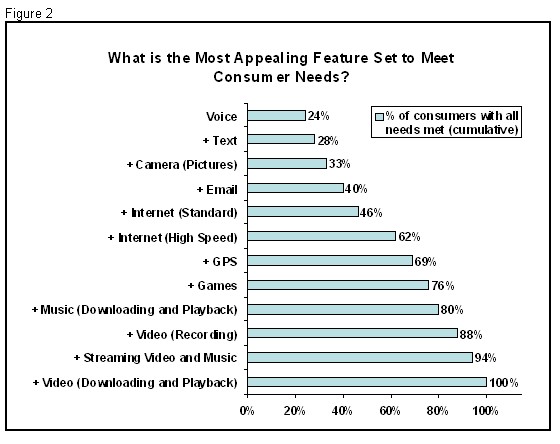One Device or Many?
In the past, consumers had many individual portable electronic devices to meet their entertainment, information, and communication needs: a cell phone for communication, a digital camera for pictures, an MP3 player for listening to music, a Nintendo DS or Sony PSP for playing games, and a laptop for email and Internet access. However, with the introduction of the Blackberry, iPhone, and other multi-function portable electronics, consumers now have the option of combining these technologies into a single device.
Previous research by the Robert H. Smith School of Business at the University of Maryland has shown that combining numerous technologies in one device, while intended to boost appeal, can also have the effect of making the product difficult or confusing to use.1 This is sometimes referred to as “feature fatigue”. At best, feature fatigue results in a steep learning curve for a new device. At worst, it can lead to a high number of returns and toxic word of mouth. Is it possible for consumer electronics manufacturers to avoid feature fatigue yet still offer products that will have mass appeal? Is there an ideal set of features one device can have that would completely satisfy a large portion of Americans?
How Many Features Do We Really Need?
In the 2009 Consumer Technology Research survey conducted by Rockbridge Associates, consumers were shown a list of 12 common portable device characteristics (such as text messaging, camera, etc.). They were then asked, if they could only carry one portable device, which features would they consider “must haves” (i.e., needs), which features would just be “nice to have,” and which are “not needed.”
As it turns out, a portable device with just four primary features would meet the needs of three quarters of consumers. After four, each additional feature adds fewer and fewer additional consumers who have their needs completely met, until the inclusion of more features barely has any impact on the portable device’s market appeal. (See Figure 1)
On the surface, it seems manufacturers are over-engineering portable electronics devices. However, the truth requires a bit more digging.
The Devil Is in the Details.
Figure 1 illustrates that a product with four features is enough to meet most consumers’ needs. Anything more and the consumer may find the device too complicated causing feature fatigue. Why would a manufacturer spend the extra money and run the risk of causing feature fatigue to offer all-inclusive devices if most consumers only need four features? The reason is simple: those four features are not the same for every consumer. So what specific features would a portable device need in order to meet the needs of the average American consumer?
The overall consensus is that voice capability (making and receiving phone calls) is required; only 6% of people feel that voice capabilities are “not needed”. However, voice capabilities alone only meet all of the needs of 24% of consumers. Combining text messaging with voice is the second most preferred feature combination, resulting in 28% of the population having all of their portable device needs met. Figure 2 shows the features that would need to be added after voice and text to build the most successful portable device.
The greatest number of consumers that have all of their portable device needs met with four features can be achieved with a device that includes voice, text, a camera for taking pictures, and email. Yet, because consumers have different preferences for what they would like their device to contain, this device only meets the needs of 40% of consumers. So while 75% of consumers need only four features to be completely fulfilled, the most effective combination of four features completely fulfills the needs of only 40%. In order to respond to the needs of 75% of consumers, a portable device would need to contain at least 8 features.
Feature fatigue does exist with portable devices and the average consumer does not need many features to meet all their needs. However, those needs differ from person to person. In order to for a device to be adopted by the majority of U.S. consumers, it must contain a large combination of features to meet consumers’ diverse needs. Unless a manufacturer can provide a cost-efficient, customized device for each user, feature fatigue is going to be an unfortunate by product of portable devices.
About this Study: The 2009 Consumer Technology Research provides timely information on topics related to technology, services and consumer lifestyles. It is based on an online survey of 529 U.S. adults age 18+ surveyed in March 2009. The sample was derived from an online research panel by eRewards, and the results are weighted to be representative of the adult population in the U.S. The survey has a margin of error of plus or minus four percentage points. The research is sponsored by Rockbridge Associates, Inc., a technology research firm based in Great Falls, Virginia. |
_________________________________________________________________________________________________________
1Roland T. Rust, Debora Viana Thompson, Rebecca W. Hamilton, “Feature Fatigue: When Product Capabilities Become Too Much of a Good Thing,” Harvard Business Review (February 2006).


